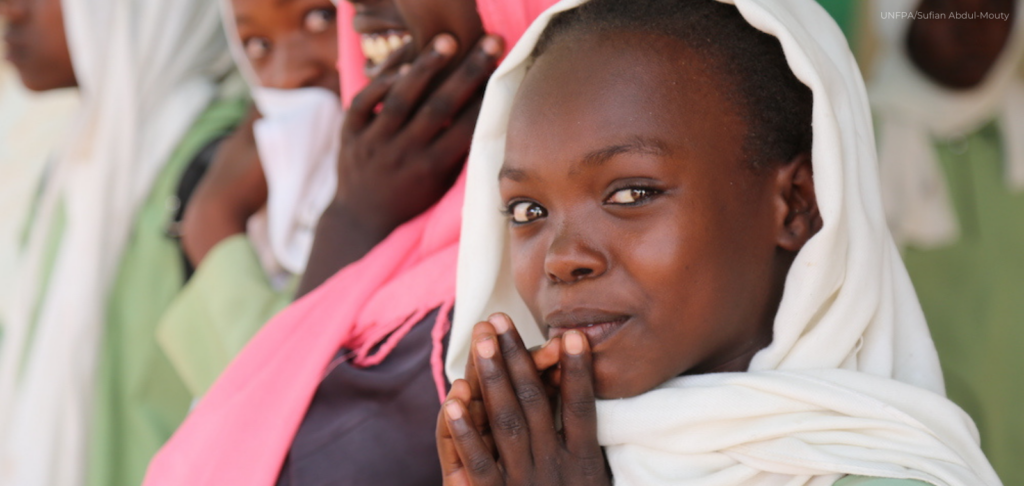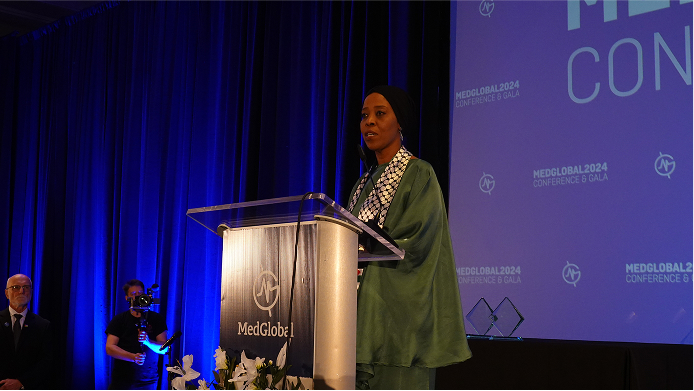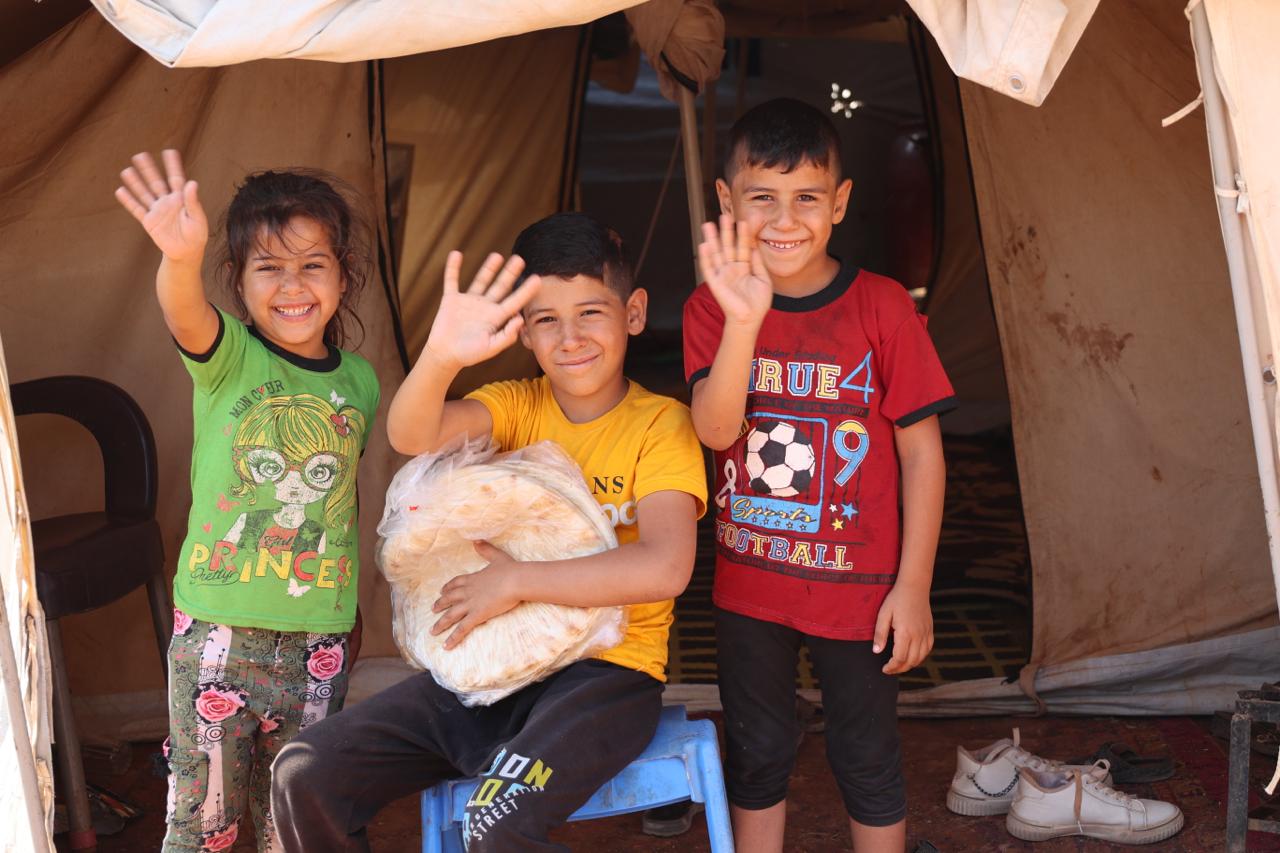Updates & Press
Featured | June 28, 2021
Gendered aspects of the global refugee crisis: gen
Author | MedGlobalComms

By Emma Ackerman, MedGlobal Communications & Advocacy Intern
Trigger warning: descriptions of sexual violence.
Recent humanitarian crises and conflicts have resulted in record numbers of people forcibly displaced worldwide. There are currently an estimated 26 million refugees around the world, 50% of whom are women. Conflicts, crises, and resulting refugee movements have deeply gendered dimensions that place women, girls, and gender minorities at a disproportionately high risk for sexual and gender-based violence and discrimination while in conflict zones, on the move, and in refugee camps.
Gender-based violence (GBV) happens on a broad spectrum, including forced and/ or child marriage, “survival sex,” sex trafficking, domestic violence, physical abuse, sexual harassment, and rape. According to a UNFPA Representative, “Gender-based violence… is one of the most pervasive human-rights abuses in the world.” Female refugees worldwide tell heartbreaking stories of unspeakable brutalization, oppression, loss of livelihood, and even identity in the quest for safety.
In the context of conflict, sexual assault and GBV are often used as weapons of war. Women’s bodies, especially those of refugee women, have long been treated as battlegrounds. Recent reports condemn the unprecedented scale of systemic rape and other forms of GBV being used as a tool of political repression. Recent conflict in the Tigray region of Ethiopia has included harrowing accounts of sexual violence against Tigrayan women and girls. Thousands of people from the Tigray region have become displaced by the conflict and have fled to camps located on the border of Ethiopia and Sudan. An open letter organized by politicians from the UK and New Zealand, alongside human rights activists, calls on the UN Security Council to set up a tribunal to investigate allegations of sexual violence in Ethiopia’s Tigray region “as a war crime, a crime against humanity, or a constitutive act of genocide.” The heartbreaking accounts of sexual violence against Tigrayan women is shining a light on sexual violence during conflict more broadly – the letter continues, saying: “Failure by the international community to act would undo the progress made so far in eliminating sexual violence in conflict.”
Refugee camps themselves come with their own security threats. A UN press release from January expresses grave concern over the rise in reported instances of sexual gender-based violence (SGBV) within refugee camps. According to interviews led by UN Women with community leaders and refugees, nearly all Rohingya women and girls living in the Cox’s Bazar refugee camps in Bangladesh has survived and/ or witnessed instances of sexual assault, rape, gang-rape, and murder during the ethnic cleansing and displacement in Myanmar. Survival sex is a common practice within refugee camps, particularly in Columbia, Sudan, Bangladesh, and Yemen, where women are forced to trade sex for food, water, and shelter in order to survive. Contraceptives are rarely used, putting medical centers under high demand for emergency contraceptives and tests for STIs, all of which are in short supply. Staggering numbers of women refugees bear the physical and mental scars of GBV and are in desperate need of health care and counseling services. Chronic pain, infertility, unwanted pregnancy, unsafe abortions, chronic incontinence, internal bleeding, STI’s, suicidality, post-traumatic stress, urinary fistulas, brain damage, mutilation, and even death are some of the most common impacts of sexual violence in refugee communities and conflict-affected areas. Refugee women often lack access to health facilities and are almost entirely reliant on services provided by UN agencies and humanitarian organizations such as MedGlobal. The chronic lack of women’s health services, poverty, and limited infrastructure in refugee communities makes health care extremely difficult to access, increasing risk of long-term repercussions. Due to social stigma of sexual assault, lack of reporting mechanisms, and fear of retaliation or deportation, refugee women rarely report cases of GBV.
COVID-19 has increased the vulnerability of women and girls while simultaneously limiting operations of many humanitarian aid organizations. From 2019-2020, sexual and gender-based violence against Venezuelan migrants in Columbia has increased by 41.5%. Within the times of COVID-19, the exacerbation and increase of sexual and gender-based violence is known by many humanitarian organizations as a “shadow pandemic.” Due to COVID-19 lockdowns, many mechanisms intended to report sexual and gender-based violence and provide victim support services are no longer accessible. Lockdowns have made it significantly more difficult for victims to escape from perpetrators and seek outside assistance. Additionally, prioritization of COVID treatment and medical support has drawn attention and funds from other important areas of health, specifically those impacting women. Leaders of women-led humanitarian organizations tell how vital sexual & reproductive health services, maternal health, and immunizations have become overlooked. There is a need for international humanitarian organizations to prioritize women’s health and experiences of refugee women in their response to refugee crises.
Humanitarian aid responses should center the needs and priorities of refugee women and promote healing in an inclusive, intersectional, and culturally competent manner. Team Zamzam is a group of 16 Sudanese women who have provided free counseling and medical advocacy services to over 1,000 women and girls struggling with trauma from sexual violence since September 2020. They are a remarkable example of the power of mental health & psychosocial support led by affected communities. Refugee women’s perspectives are also critical in identifying strategies for reducing and preventing GBV in refugee camps. For example, in the Dadaab refugee camp, rape was reduced by 45% after stocking houses with firewood rather than having women go out to collect it on a daily basis. Further steps need to be taken in order to close the chasm between resolution and reality of stopping gender-based violence in refugee communities and conflict-affected areas.


